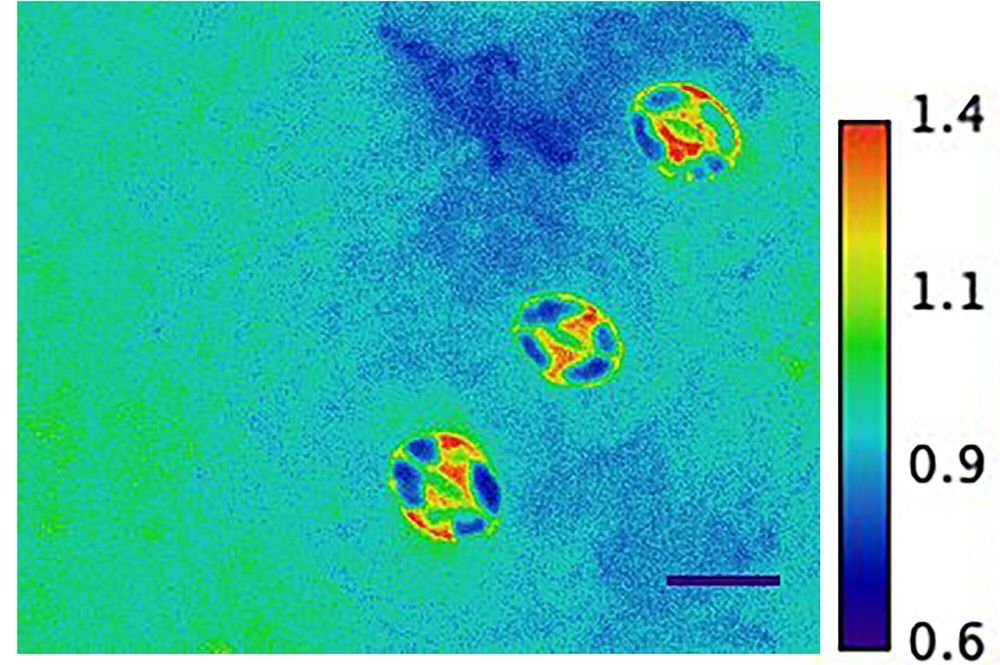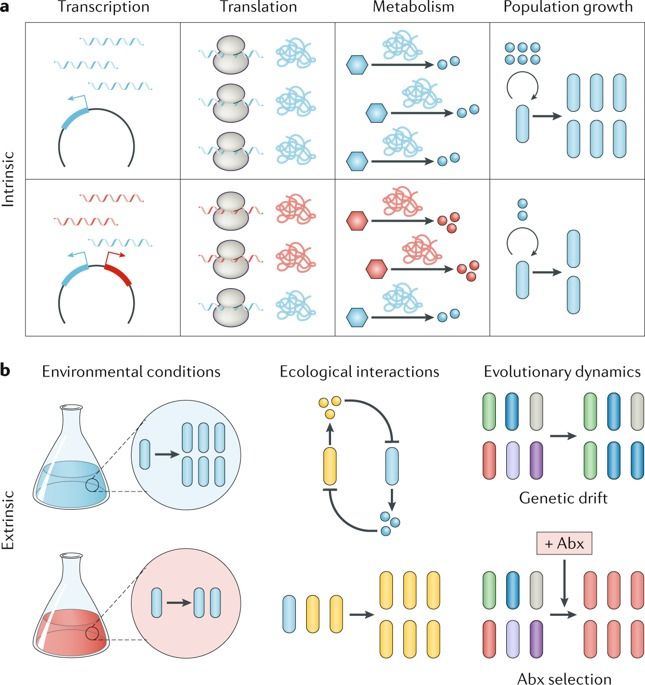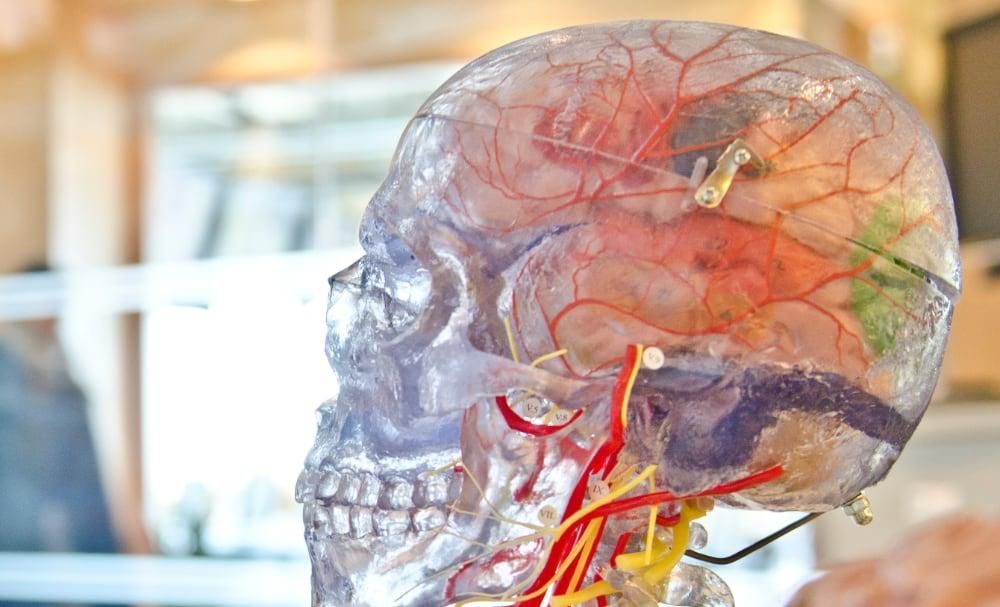Scientists have figured out how microbes can suck energy from rocks. Such life-forms might be more widespread than anyone anticipated.
Category: biological – Page 194

Active particles with light-switchable propulsion direction and reversible interactions
Researchers from the Faculty of Physics at the University of Warsaw, ETH in Zurich and the University of Cambridge have synthesized and analysed active microparticles self-propelling in a fluid and reversing their propulsion direction depending on the wavelength of illuminating light. A research article summarising their work has recently been published in Nature Communications.
Active matter encompasses systems with self-propelling elements that draw energy from the environment and convert it into kinetic energy. This is currently a lively discipline in physics, spanning across many time and length scales, concerning, e.g., the behaviour of birds in flocks (such as murmurations of starlings), schools of fish (as a form of protection against predators), and also bacteria in biofilms and other aquatic microswimmers. It focuses both on the behaviour of individual elements and understanding their mechanisms of energy conversion, interaction and coupling with the environment so important for the survival, and on the collective effects and emergence of new phenomena in large populations. Both can be successfully described on different levels of precision, starting from simplistic minimal coarse-grained models, and up to refined numerical simulations.
Bacteria, algae, spermatozoa, ciliates and other unicellular organisms are an important group of active swimmers. Exploring the physical basis of their dynamics is often complicated by their immense diversity, biological complexity, and high sensitivity to external conditions. The aquatic microworld is, however, governed by the universal laws of fluid dynamics, which put limitations on all organisms.
Study reveals continuous pathway to building blocks of life
Researchers have long sought to understand the origins of life on Earth. A new study conducted by scientists at the Institute for Advanced Study, the Earth-Life Science Institute (ELSI), and the University of New South Wales, among other participating institutions, marks an important step forward in the effort to understand the chemical origins of life. The findings of this study demonstrate how “continuous reaction networks” are capable of producing RNA precursors and possibly ultimately RNA itself — a critical bridge to life.
The paper is published in the Proceedings of the National Academy of Sciences.
While many of the mechanisms that propagate life are well understood, the transition from a prebiotic Earth to the era of biology remains shrouded in mystery. Previous experiments have demonstrated that simple organic compounds can be produced from the reactions of chemicals understood to exist in the primitive Earth environment. However, many of these experiments relied on coordinated experimenter interventions. This study goes further by employing a model that is minimally manipulated to most accurately simulate a natural environment.

New biosensor visualizes stress in living plant cells in real time
Plant biologists have long sought a deeper understanding of foundational processes involving kinases, enzymes that catalyze key biological activities in proteins. Analyzing the processes underlying kinases in plants takes on greater urgency in today’s environment increasingly altered by climate warming.
Certain “SnRK2” kinases (sucrose-non-fermenting-1-related protein kinase-2s) are essential since they are known to be activated in response to drought conditions, triggering the protective closure of small pores on leaf surfaces known as stoma. These pores allow carbon dioxide to enter leaves, but plants also lose more than 90 percent of their water by evaporation through them. Pore opening and closing functions help optimize growth and drought tolerance in response to changes in the environment.
Now, plant biologists at the University of California San Diego have developed a new nanosensor that allows researchers to monitor SnRK2 protein kinase activity in live plant cells. The SnRK2 activity sensor, or “SNACS,” is described in the journal eLife.

Predictive biology: modelling, understanding and harnessing microbial complexity
Predictive biology is the next great chapter in synthetic and systems biology, particularly for microorganisms. Tasks that once seemed infeasible are increasingly being realized such as designing and implementing intricate synthetic gene circuits that perform complex sensing and actuation functions, and assembling multi-species bacterial communities with specific, predefined compositions. These achievements have been made possible by the integration of diverse expertise across biology, physics and engineering, resulting in an emerging, quantitative understanding of biological design. As ever-expanding multi-omic data sets become available, their potential utility in transforming theory into practice remains firmly rooted in the underlying quantitative principles that govern biological systems. In this Review, we discuss key areas of predictive biology that are of growing interest to microbiology, the challenges associated with the innate complexity of microorganisms and the value of quantitative methods in making microbiology more predictable.

AI Startup Combines Mouse Neurons With Silicon Chips To Make Computers Smarter, Faster
There aren’t many computer chips that you have to build a life support system for.
But when you’re combining actual living brain cells with inorganic silicon chips, you can’t feed them just electricity. You actually need to supply everything they would normally get in a fully biological body.
Why bother?

Novel insight reveals topological tangle in unexpected corner of the universe
Just as a literature buff might explore a novel for recurring themes, physicists and mathematicians search for repeating structures present throughout nature.
For example, a certain geometrical structure of knots, which scientists call a Hopfion, manifests itself in unexpected corners of the universe, ranging from particle physics, to biology, to cosmology. Like the Fibonacci spiral and the golden ratio, the Hopfion pattern unites different scientific fields, and deeper understanding of its structure and influence will help scientists to develop transformative technologies.
In a recent theoretical study, scientists from the U.S. Department of Energy’s (DOE) Argonne National Laboratory, in collaboration with the University of Picardie in France and the Southern Federal University in Russia, discovered the presence of the Hopfion structure in nano-sized particles of ferroelectrics—materials with promising applications in microelectronics and computing.

Plant-based metal and metal alloy nanoparticle synthesis: a comprehensive mechanistic approach
Circa 2019 o.o
There are enormous methods such as physical, chemical, and biological, for the synthesis of metallic nanoparticles (MNPs), which has become a matter of focus among material scientists. Green chemistry-based MNP synthesis is an area, which has gained much importance presently due to their non-toxicity and monodispersed nanoparticle preparation methodologies. Among green synthesis methods, plants are considered as efficient candidates for nanoparticle synthesis. The meticulous formation of different sizes and shapes of the nanoparticles using plants has spurred encouraging interest. The rate kinetics and stability of nanoparticle synthesis are well studied as well as appreciated in the arena of materials. Their capability to sequester metal ions and fastidiously define the dimensions using a plethora of capping proteins such as glutathione and phytochelatins is intriguing giving it a monodispersed size. This review is a comprehensive understanding of the metal nanoparticles synthesized by plants and apprehends the mechanism of nanoparticle synthesis exhaustively.
